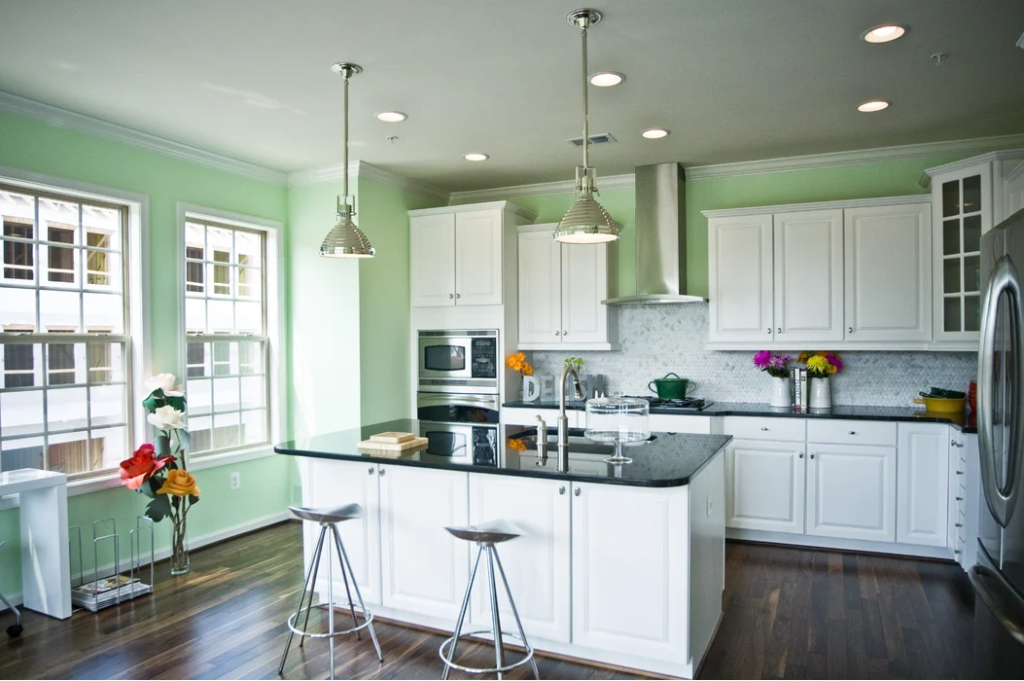
Yes, you can absolutely replace kitchen cabinets without damaging yoru countertop. The process is often easier than expected. Doing it yourself saves a lot of money compared to hiring professionals. Before removing cabinets, ensure your stone or hardwood countertop has proper support. This is crucial. Countertops are heavy, so provide adequate support during the replacement. Keep reading to learn how to replace kitchen cabinets without replacing the countertop.
How Can You Remove the Lower Kitchen Cabinets Without Being Damaged?
Removing lower kitchen cabinets safely mirrors the steps we discussed earlier.Prioritize caution for the best outcome. Avoid rushing or excessive force. First, disconnect all fasteners and nuts. Next, loosen any adhesives.carefully extract the cabinets. This method minimizes potential damage to the cabinetry.
Should You reface or Replace Kitchen Cabinets?
Cabinet refacing involves updating the visible surfaces of your cabinets. It keeps the existing cabinet structure intact. This typically means replacing doors, drawer fronts, and hardware. Then,laminate or wood veneers are applied to the exterior surfaces for a uniform appearance. Refacing is a great option if your cabinet boxes are sturdy and in good condition.
Replacing cabinets means updating both their inner structure and outer look.This involves removing the entire cabinet box, clearing out old materials, and making room for a fresh design.If you’re planning a full kitchen remodel and want to change the layout,consider replacing your kitchen cabinets.
Is it More Convenient to Replace the Kitchen Cabinets Without the Countertop or Not?
Removing a kitchen cabinet becomes simple if studs support your countertop. The key is staying calm and careful throughout each step. If you’ve followed our cabinet separation instructions, you’ll find it easier than expected.
How to Remove the Kitchen Cabinets Without the Need to Removing the Countertop?
You now understand that replacing old kitchen cabinets with modern ones is possible without removing the countertop first. The main question is: how do you remove the cabinets without damaging the countertop? While plumbers may suggest various methods, replacing the cabinet often yields the best results. The process is surprisingly straightforward and doesn’t require extensive technical knowledge.
loosen the Cabinet Screws
Upon examining the kitchen cabinet’s interior, you’ll find various fasteners securing it to both the cabinet itself and adjacent walls. These fasteners are crucial for maintaining the kitchen cabinetry’s stability. To prepare the cabinet for disassembly, carefully remove each screw individually.
Consider how the toe base is built. Sometimes, the toe base isn’t a separate piece. Instead, it’s made at the same time as the cabinet. If this is the case, you can’t remove the cabinet without harming it. To replace old cabinet containers with new styles, you’ll need to tear down the old ones first.
Cut Around the Plumbing Areas
frequently enough, cabinet backs adjoin the plumbing area.Removing cabinets from under a counter can be tricky due to this connection.Take care to avoid damaging existing pipes during removal.
Use a reciprocating saw or jigsaw for this task. Choose the saw you’re most comfortable using for optimal results. Cut away the kitchen cabinet sections nearest the pipes with your chosen tool.
When cutting around plumbing areas, make sure your cuts are deep. This creates space for the cabinet to fit around the kitchen sink. Be careful when cutting; damaging the plumbing is a risk.
Use Suds to Support the Weight of the Countertop
We’ve highlighted that kitchen countertops, especially granite and stone ones, can be very heavy.This weight can strain the support system. Consequently, the countertop might detach, damaging the entire cabinet structure.
We use 2×4 inch studs for this task. The studs must be strong enough to hold the counter’s weight. When removing cabinet parts, install studs to properly support the countertop. Use the same stud attachment method on all cabinet walls. this keeps the countertop in top condition.
Check the Walls of the Cabinets
Due to the proximity of cabinet walls to plumbing,moisture buildup is highly likely. this can lead to mold and mildew growth. This poses a risk to your new kitchen cabinets and their sides. Mold formation is also a notable health hazard.
Therefore, carefully inspect the cabinet’s sidewalls and the plumbing. If you spot any mold, eliminate it with a store-bought mold remover. Also, use dehumidifiers to keep surfaces dry. This will prevent future moisture buildup on the sidewalls.
If mold growth is excessive and walls are significantly damaged, consider hiring professional contractors.Also, inspect plumbing areas for leaks. If you find any, seal them thoroughly with Teflon tape.
Install the New Cabinets
Once you’re sure the surfaces are dry, you can install the new kitchen cabinet. Near the pipes, carefully push the cabinet boards against the exposed walls. After positioning the cabinet correctly, remove the temporary supports under the countertop. Next, tighten each screw individually. Check for gaps around the plumbing. to ensure stability, fill any gaps with appropriate materials like concrete or Teflon.
